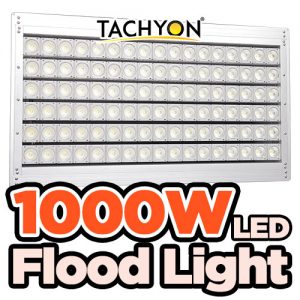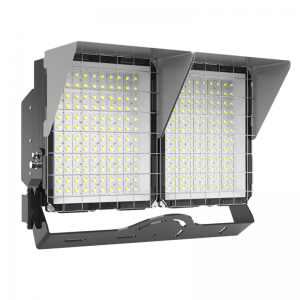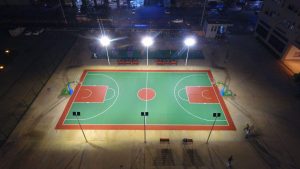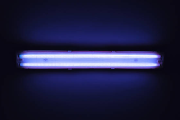What is surge
Surge protection
Gas discharge tube
It is composed of a pair of cold negative plates separated from each other and encapsulated in a glass tube or ceramic tube filled with a certain inert gas (Ar). In order to improve the triggering probability of the discharge tube, there is an auxiliary triggering agent in the discharge tube. This gas-filled discharge tube has two-pole type and three-pole type.
The technical parameters of gas discharge tubes mainly include: DC discharge voltage Udc; impulse discharge voltage Up (in general Up≈(2~3) Udc; power frequency and current delivery In; impulse and delivery current Ip; insulation resistance R (>109Ω) ); Interelectrode capacitance (1-5PF)
The gas discharge tube can be used under DC and AC conditions. The selected DC discharge voltage Udc is as follows: Used under DC conditions: Udc≥1.8U0 (U0 is the DC voltage at which the line works normally)
Use under AC conditions: U dc≥1.44Un (Un is the effective value of the AC voltage for normal operation of the line)
Varistor
It is a metal oxide semiconductor non-linear resistance with ZnO as the main component. When the voltage applied to both ends reaches a certain value, the resistance is very sensitive to voltage. Its working principle is equivalent to the series-parallel connection of multiple semiconductor P-Ns. Varistors are characterized by good non-linear characteristics (I=non-linear coefficient α in CUα), large current capacity (~2KA/cm2), low normal leakage current (10-7~10-6A), and low residual voltage (depending on the Due to the working voltage and current capacity of the varistor, the response time to instantaneous overvoltage is fast (~10-8s), and there is no freewheeling.
The technical parameters of varistor mainly include: varistor voltage (ie switching voltage) UN, reference voltage Ulma; residual voltage Ures; residual voltage ratio K (K=Ures/UN); maximum current capacity Imax; leakage current; response time .
The use conditions of varistor are: varistor voltage: UN≥[(√2×1.2)/0.7]Uo (Uo is the rated voltage of the power frequency power supply)
Minimum reference voltage: Ulma≥(1.8~2) Uac (used under DC conditions)
Ulma≥(2.2~2.5) Uac (used under AC conditions, Uac is AC working voltage)
The maximum reference voltage of the varistor should be determined by the withstand voltage of the protected electronic device, and the residual voltage of the varistor should be lower than the loss voltage level of the protected electronic device, that is (Ulma)max≤Ub/K, above Where K is the residual voltage ratio, Ub is the loss voltage of the protected equipment.
Suppression diode
Suppressor diode has the function of clamping and limiting voltage. It works in the reverse breakdown zone. Because of its low clamping voltage and fast action response, it is particularly suitable for use as the last few protection components in multi-level protection circuits. The volt-ampere characteristics of the suppression diode in the breakdown zone can be expressed by the following formula: I=CUα, where α is the nonlinear coefficient, for the Zener diode α=7~9, and for the avalanche diode α=5~7.
The technical parameters of suppression diodes mainly include:
⑴Rated breakdown voltage, which refers to the breakdown voltage under the specified reverse breakdown current (usually lma). As for the Zener diode, the rated breakdown voltage is generally in the range of 2.9V~4.7V, while the avalanche diode is rated The breakdown voltage is often in the range of 5.6V to 200V.
⑵Maximum clamping voltage: it refers to the highest voltage that appears at both ends of the tube when the large current of the specified waveform is passed.
⑶ Pulse power: It refers to the product of the maximum clamping voltage at both ends of the tube and the equivalent current in the tube under the specified current waveform (such as 10/1000μs).
⑷Reverse displacement voltage: It refers to the maximum voltage that can be applied to both ends of the tube in the reverse leakage zone, and the tube should not be broken down under this voltage. This reverse displacement voltage should be significantly higher than the peak operating voltage of the protected electronic system, that is, it cannot be in a weak conduction state when the system is operating normally.
⑸Maximum leakage current: It refers to the maximum reverse current flowing in the tube under the action of reverse displacement voltage.
⑹ Response time: 10-11s
Choke coil
The choke coil is a common mode interference suppression device with ferrite core. It consists of two coils of the same size and the same number of turns symmetrically wound on the same ferrite toroidal core, forming a four-terminal The device has a suppressive effect on the large inductance of the common-mode signal, but has little effect on the small leakage inductance for the differential-mode signal. The use of choke coils in balanced lines can effectively suppress common mode interference signals (such as lightning interference) without affecting the differential mode signals normally transmitted by the line.
The choke coil should meet the following requirements when making:
1) The wires wound on the core of the coil must be insulated from each other to ensure that no short-circuit breakdown occurs between the turns of the coil under the action of instantaneous overvoltage.
2) When the instantaneous large current flows through the coil, the magnetic core should not be saturated.
3) The magnetic core in the coil should be insulated from the coil to prevent breakdown between the two under the action of transient overvoltage.
4) The coil should be wound in a single layer as much as possible. This can reduce the parasitic capacitance of the coil and enhance the coil’s ability to withstand transient overvoltage.
1/4 wavelength short circuiter
The 1/4 wavelength short-circuit device is a microwave signal surge protector made based on the spectrum analysis of the lightning wave and the standing wave theory of the antenna and feeder. The length of the metal short-circuit bar in this protector is based on the working signal frequency (such as 900MHZ or 1800MHZ ) Is determined by the size of 1/4 wavelength. The length of the parallel shorting bar is infinite for the frequency of the working signal, which is equivalent to an open circuit and does not affect the transmission of the signal. However, for lightning waves, because the lightning energy is mainly distributed below n+KHZ, this shorting bar The lightning wave impedance is very small, which is equivalent to a short circuit, and the lightning energy level is leaked into the ground.
Since the diameter of the 1/4-wavelength short-circuit bar is generally several millimeters, the impact current resistance performance is good, which can reach more than 30KA (8/20μs), and the residual voltage is very small. This residual voltage is mainly caused by the short-circuit bar’s own inductance The disadvantage is that the power band is relatively narrow, with a bandwidth of about 2% to 20%. Another shortcoming is that it is not possible to add a DC bias to the antenna feeder facility, which limits certain applications.
Graded protection
Graded protection of surge protectors (also called lightning protectors)
Since the energy of lightning strikes is very huge, it is necessary to gradually discharge the energy of lightning strikes to the ground through a hierarchical discharge method. The first-level lightning protection device can discharge the direct lightning current, or discharge the huge energy conducted when the power transmission line is directly struck by lightning. For places where direct lightning strikes may occur, CLASS-I lightning protection must be carried out. The second-level lightning protection device is a protection device for the residual voltage of the front-level lightning protection device and the induced lightning strike in the area. When the front-level lightning strike energy absorption occurs, there is still a part of the equipment or the third-level lightning protection device. It is quite a huge amount of energy that will be transmitted, and it needs to be further absorbed by the second-level lightning protection device. At the same time, the transmission line passing through the first-level lightning protection device will also induce lightning strike electromagnetic pulse radiation LEMP. When the line is long enough, the energy of the induced lightning becomes large enough, and the second-level lightning protection device is required to further discharge the lightning energy. The third-level lightning protection device protects LEMP and the residual lightning energy passing through the second-level lightning protection device.
First level protection
The purpose is to prevent the surge voltage from being conducted directly from the LPZ0 zone into the LPZ1 zone, and limit the surge voltage of tens of thousands to hundreds of thousands of volts to 2500-3000V.
The power surge protector installed on the low-voltage side of the home power transformer should be a three-phase voltage switching power surge protector as the first level of protection, and its lightning flow rate should not be less than 60KA. This level of power surge protector should be a large-capacity power surge protector connected between the incoming phases of the user’s power supply system and the ground. It is generally required that this level of power surge protector has a maximum impact capacity of more than 100KA per phase, and the required limit voltage is less than 1500V, which is called CLASS I power surge protector. These electromagnetic lightning arresters are specially designed to withstand large currents from lightning and induced lightning and to attract high-energy surges, which can shunt large amounts of surge currents to the ground. They only provide limited voltage (when the impulse current flows through the power surge arrester, the maximum voltage appearing on the line is called the limiting voltage) as a medium-level protection, because CLASS I protectors mainly absorb large surge currents. They cannot completely protect the sensitive electrical equipment inside the power supply system.
The first-level power surge protector can prevent 10/350μs, 100KA lightning waves, and reach the highest protection standard specified by IEC. Its technical reference is: the lightning flow is greater than or equal to 100KA (10/350μs); the residual voltage value is not greater than 2.5KV; the response time is less than or equal to 100ns.
Second level protection
The purpose is to further limit the value of the residual surge voltage through the first-level lightning arrester to 1500-2000V, and implement equipotential connection for LPZ1-LPZ2.
The power surge protector output from the distribution cabinet circuit should be a voltage-limiting power surge protector as the second level of protection. Its lightning current capacity should not be less than 20KA, and should be installed in the substation that supplies power to important or sensitive electrical equipment. Road distribution office. These power supply lightning arresters can better absorb the residual surge energy that has passed through the surge arrester at the user’s power supply entrance, and have a better suppression of transient overvoltage. The power surge protector used here requires a maximum impact capacity of 45kA or more per phase, and the required limit voltage should be less than 1200V, which is called CLASS Ⅱ power surge protector. The general user power supply system can achieve the second level of protection to meet the requirements of the operation of electrical equipment
The second-level power lightning arrester adopts class C protector for phase-center, phase-earth and middle-earth full mode protection. The main technical parameters are: lightning current capacity greater than or equal to 40KA (8/20μs); residual voltage The peak value is not more than 1000V; the response time is not more than 25ns.
Third level protection
The purpose is to ultimately protect the equipment by reducing the value of the residual surge voltage to within 1000V, so that the surge energy will not damage the equipment.
The power surge protector installed at the incoming end of the AC power supply of electronic information equipment should be a series voltage-limiting power surge protector as the third level of protection, and its lightning current capacity should not be less than 10KA.
The last line of defense can use a built-in power lightning protector in the internal power supply of the electrical equipment to achieve the purpose of completely eliminating the tiny transient overvoltage. The power surge protector used here requires a maximum impact capacity of 20KA or less per phase, and the required limit voltage should be less than 1000V. For some particularly important or particularly sensitive electronic equipment, it is necessary to have the third level protection, and it can also protect the electrical equipment from the transient overvoltage generated inside the system.
For the rectifier power supply used in microwave communication equipment, mobile station communication equipment and radar equipment, it is advisable to select a DC power supply lightning protector adapted to the working voltage as the final protection according to the protection needs of its working voltage.
Level 4 and above protection
According to the withstand voltage level of the protected equipment, if the two-level lightning protection can limit the voltage to be lower than the equipment’s withstand voltage level, only two levels of protection are needed. If the equipment’s withstand voltage level is low, four levels or even More levels of protection. The lightning current capacity of the fourth level protection should not be less than 5KA.






